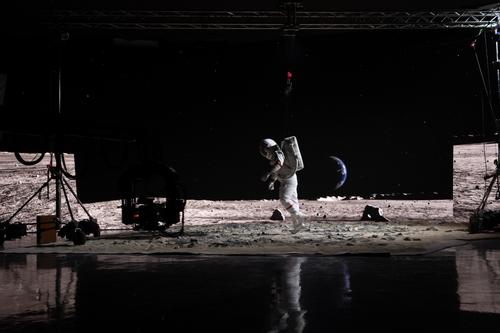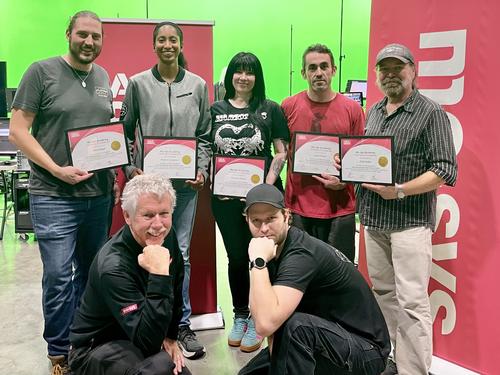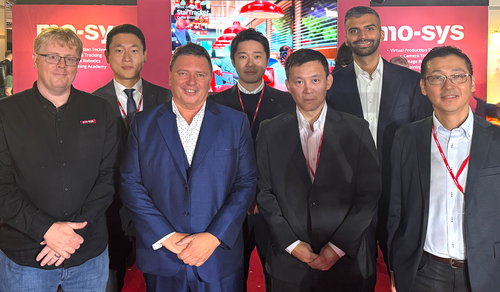Augmented Reality in Corporate Training: The Future of Learning
Overlapping real life images with computer-generated graphics, Augmented Reality (AR) technology is becoming increasingly popular. Besides being used for virtual film and broadcast production, it’s adding an extra dimension to gaming, education, and live entertainment.
Another area where it’s beginning to gain traction is that of corporate training. Various organisations have begun to incorporate AR into their training strategies in order to engage, inform, and connect a globally-disparate workforce. Just as AR is revolutionising how we produce and consume media, it’s also changing how we communicate complex ideas at work. If you’re curious about what augmented reality offers your corporate training scheme, read on to find out more.
What is Augmented Reality (AR)?
AR blends photo-realistic 3D graphics, effects, and objects into a real-world environment. It combines virtual and real-world elements to create a contextually rich user experience that wouldn’t otherwise be possible. Its real value, however, comes from the fact that users can interact with virtual objects in real-time – this is why it has such a multitude of uses.
What is the difference between virtual and augmented reality?
The difference between Augmented Reality and Virtual Reality (VR) is that the latter creates an entirely computer-generated environment. A VR environment is completely simulated and doesn’t need any real-world input. An augmented environment, on the other hand, blends real-life with computer graphics to create a convincing, stimulating experience.
And this capability has been utilised for various reasons; The Weather Channel, for instance, use AR (enabled by Mo-Sys StarTracker) to enhance their broadcasts, whilst various apps (such as BBC Civilisations) use a basic version of the tech to create more captivating content.
How does AR work?
Broadly speaking, AR relies on cameras, computers, and software to capture real-world images and superimpose virtual objects in real time.
A key element in a more sophisticated AR system is camera tracking; whether optical or mechanical, tracking systems allow cameras to move freely around a virtual or augmented set whilst maintaining the absolute positions of objects. In effect, this means you can move around virtual objects in a real-world setting without distorting them in any way. The end result can be displayed either on a computer, TV, or phone screen.
AR in corporate training
According to a 2019 report from PwC, the VR and AR market is expected to provide a boost of $1.5 trillion to the global economy over the next decade – and 20% of this will be driven by their use in corporate training.
Such a huge figure is justified when you consider the benefits that this technology brings:
- Reduced costs – AR tech can reduce training costs by reducing the need to travel, the use of physical training facilities, and the recruitment of multiple human facilitators.
- Improved sustainability – Reduced travel (especially for international teams) significantly reduces the carbon emissions associated with training.
- Improved scalability – With AR technology, it’s easier to run multiple training sessions simultaneously. This allows you to rapidly scale-up your organisation’s training strategy.
- Greater engagement – The immersive nature of AR experiences leads to greater engagement and more effective learning.
Examples of AR in corporate training
Mercedes-Benz
The German car manufacturer has been using AR technology to train employees across different business functions as well as market new models. Whilst AR is relevant to all business areas, it’s proven particularly useful to engineers and Research & Development teams; the tech virtually disassembles all the components of a vehicle, whilst showing their individual functions and locations.
Boeing
The aviation industry has long used VR and AR for different types of training. Boeing has been at the forefront of advances, using the tech from training pilots to engineers; most recently, the aircraft manufacturer has used AR technology to guide technicians in complex aircraft wiring schematics – resulting in a 25% decrease in production time, and a 40% increase in productivity. (Here's a video of Paul Davis from Boeing discussing how AR is used to manufacture their places)
Thames Water
Thames Water has used AR and VR to train its staff and showcase future projects. Back in 2012, it used AR technology to superimpose water-flow graphics onto a static, real-world model of a new sewage system. More recently, it’s used the tech to allow workers to experience on-the-job situations in a safe, adaptable environment, as well as raise awareness of mental health in the workplace.
Ford
Alongside training, AR technology has also been used to showcase new products. In 2017, Ford unveiled a number of new models at the North American Auto Show, using AR to demonstrate their new capabilities. With photo-realistic, high poly-count 3D animations overlaying the physical vehicles, Ford provided viewers with a privileged look under the sheet metal at how individual parts functioned.
The Future of Training
The days of stuffy conference rooms with whiteboards and lacklustre presentations are coming to an end. Companies that truly want to empower their staff are turning to augmented reality training solutions. With the right technology, they improve learning, bolster engagement, and save time and money.
Mo-Sys is a market-leading supplier of Virtual and Augmented Reality Production technology. Our StarTracker Studio is a complete VR and AR studio package designed for a wide range of uses – from film and broadcasts to augmented reality corporate training. If you’re interested in learning more about how our technology can help your organisation, please get in contact.




